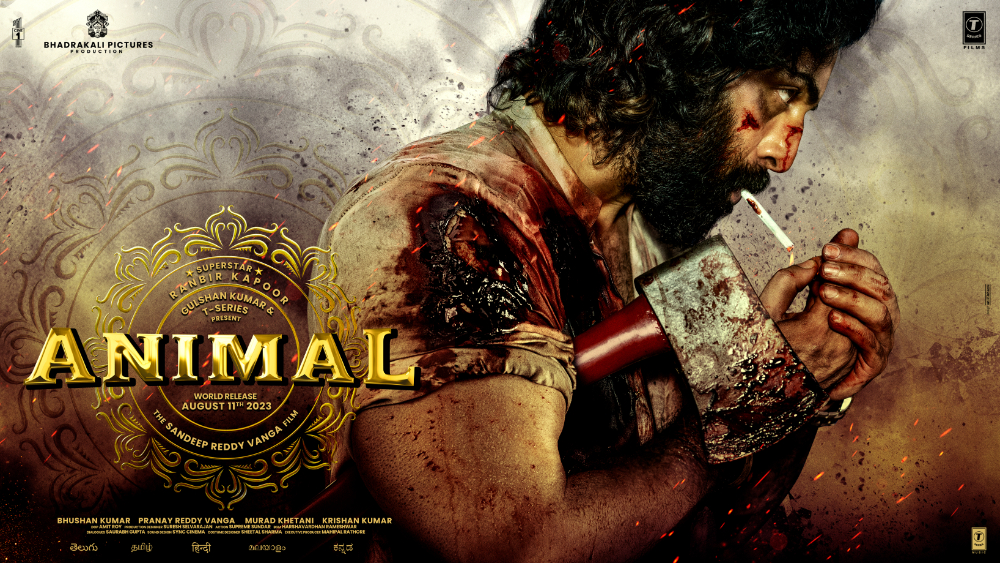At the behest of filmmaker Aanand L Rai, A R Rahman heard the songs of Tanu Weds Manu which was the director’s previous film. Rahman decided to take the project, and as a challenge to self, set up the mood for Banaras. He was envious of Tanu Weds Manu’s trailblazing soundtrack.
Raanjhanaa‘s title track is the sun’s angrayi breaking into dawn. If you’re up and yawning, trying to slug off inertia, this is going to hit you like good morning, hello world. ‘Meri bhor ab mukh dikhla,’ the singer Shiraz Uppal perks up in a mild south accent (his t’s have an h) – probably the character of Dhanush looking at his sunshine Sonam on her foggy balcony, and that’s what the song is – a burst of energy when you are out early up, and the world around you moves with such vigour that you want to break into a crazy silly jig right there and then. Why don’t I ever wake up early?
Shreya Ghoshal sings Banarasiya, she is accompanied by chorus girls Meenal Jain and Amwesha Datta Gupta (the trio form the classic 3 singing sisters of the ghat – badki, majli and chhutki). Shreya sings it in Lata didi’s harkat. The rhythmic back beat on which the girls trill keeps soaring for a fantastic sitar, flute, tabla interlude clasped within a delicate manjira. Remember Shreya singing Bhor Bhaye (Delhi 6). Banarasiya competes with that. Can go shrill, but will still be sweet. Tough act to repeat for Rahman sir.
Tum Tak breaks and breaks into so many sub genres with the reliable Javed Ali – going bhajan, an anthem, then returning to dance. Its the Rahman we know – don’t try to fit me in a box of your limited headspace. Keerthi Sagathia and Pooja make a mid-song entry, and the song is mostly in the ‘tum tak’ refrain soaring into a trance state effect. Percussion ka baap, Rahman saab.
Again, with Piya Milenge, in Sukhwinder Singh‘s low to high tempo, backed by the KMMC Sufi Ensemble, what a goosebumpy ride. Songwriter Irshad Kamil infuses it with divine invocation in his words, which is for Rahman just the tip he needs for a full blast firing-on-all-cylinders attack. The track surges, its passion rebellious, this is the kind of rabble rousing fiesty sound Rahman has always excelled in. Look at Noor Un Ala Noor (Meenaxi). Its both a beautiful call for love, as it cogitates self for it.
Four singers, Madhushree, Chinmayi, Vaishali and Aanchal seem be to prompting each other in Aye Sakhi. Between the use of ghatam, and tabla, the chattering girls are doing what four girls do when they sit to gossip. So the use of nonsense words and sounds, trills and alaaps make the song something of a cackle, a joke running through a melodious clatter of instruments.
Neeti Mohan and Rashid Ali‘s Nazar Laaye sticks out sore – its soft cottoned pop sound is an interval to the assault on our ears so far. Does it fit? Or is it welcome respite from all the ear straining we are putting up with? Too early to say. Its one of those Rahman numbers which will take time to grow, or will be skipped entirely. Verdict: Undecided.
From the very first chorus cheer ‘hey, say’ at the start of Tu Mann Shudi, even before the song has begun, you know this one is going to rip it apart. Rahman sets the stage for Rabbi’s angsty vocal blast, rajj ke. The techno score just ups it even more. Rahman’s refrain of Khusro’s poetry is scintillating as an echo.
Rahman not singing for us, is curse or cure, you decide. Aisa Na Dekho, should have been Aisa Na Gaao. He hams it, for the word ‘hamdardi’ – we smell ham burning, hamm-turgid. Why, that screechy pitch, and as Javed Akhtar will say, ‘wrong talaffuz’ Rahman sir, are you reading a poem in hindi? Your third-fourth-fifth language? The guitar is great, the mouth organ serenades, but please, and the whistles, well, cute and strictly avoidable.
The instrumental track, The Land Of Shiva is dark, broody, visceral. Meluha land like. Suits Banaras too.
Raanjhanaa lacks shelf life in terms of ‘sur sangeet’ – while there’s lots of sur, and even more of sangeet in this densely packed soundtrack it does not have the staying merit of Taal or Dil Se which were equally complex in structure, yet melodic to ever ‘flow’. It should also be noted that though the songwriter has done a good job, apart from some refrain phrases, there isn’t a whole song that can be hummed, because it keeps twisting this way and that.
Our ears are constantly being turned like a knob on a musty radio-set.





